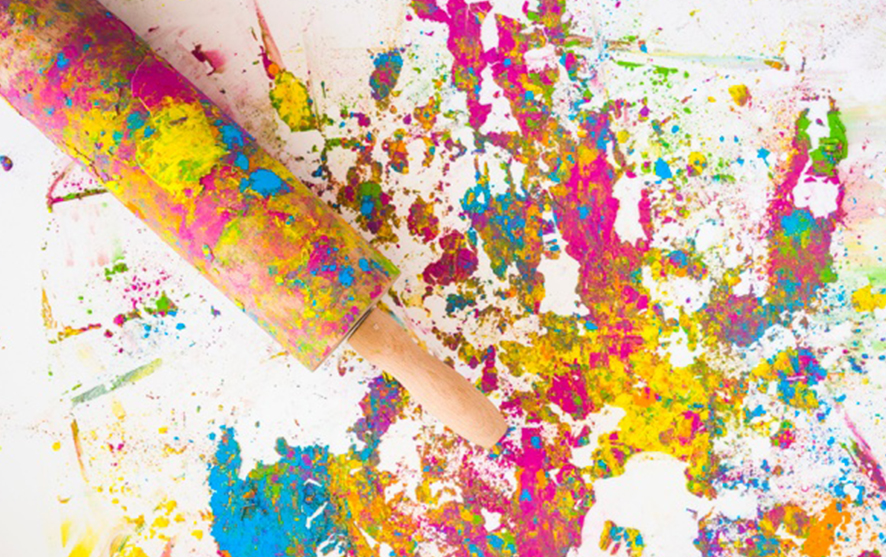Cranberry flapjack bars
Packed full of energy-inducing fruits and seeds, our cranberry flapjack bars are great for on-the-go […]
Read more

Experimenting with mark-making and using different textures to create imprints is an exciting and engaging sensory experience for your child. Making a connection between their movements (in this case, rolling the pin) and the marks made is all part of the journey to becoming a writer, that begins from the earliest age.
Prepare an area, such as a large piece of paper taped to the floor or a table area.
You will need to prepare your rolling pins ahead of time. The idea is to create different textures that will make a variety of prints. You could perhaps stick some bubble wrap to one pin; wrap some string in various arrangements around another; glue on pieces of cardboard in different shapes or stick one some sponges, etc. If you’re using cardboard tubes, you could also cut out small shapes into the tube, so there will be areas where there will be no paint.
Provide some paint. This could be placed directly onto the paper in the centre, or you may like to provide on a plate or other shallow dish.
Encourage and support your child to put their rolling pin into the paint and roll on the paper to create new patterns and textures. One colour paint is all that is needed, but you could add another colour for added interest, if you wish.
Enjoy experimenting!